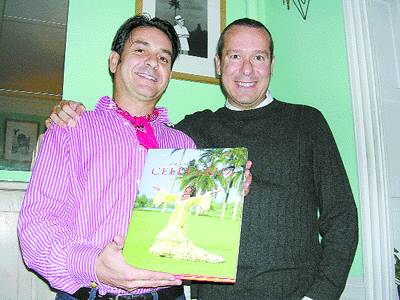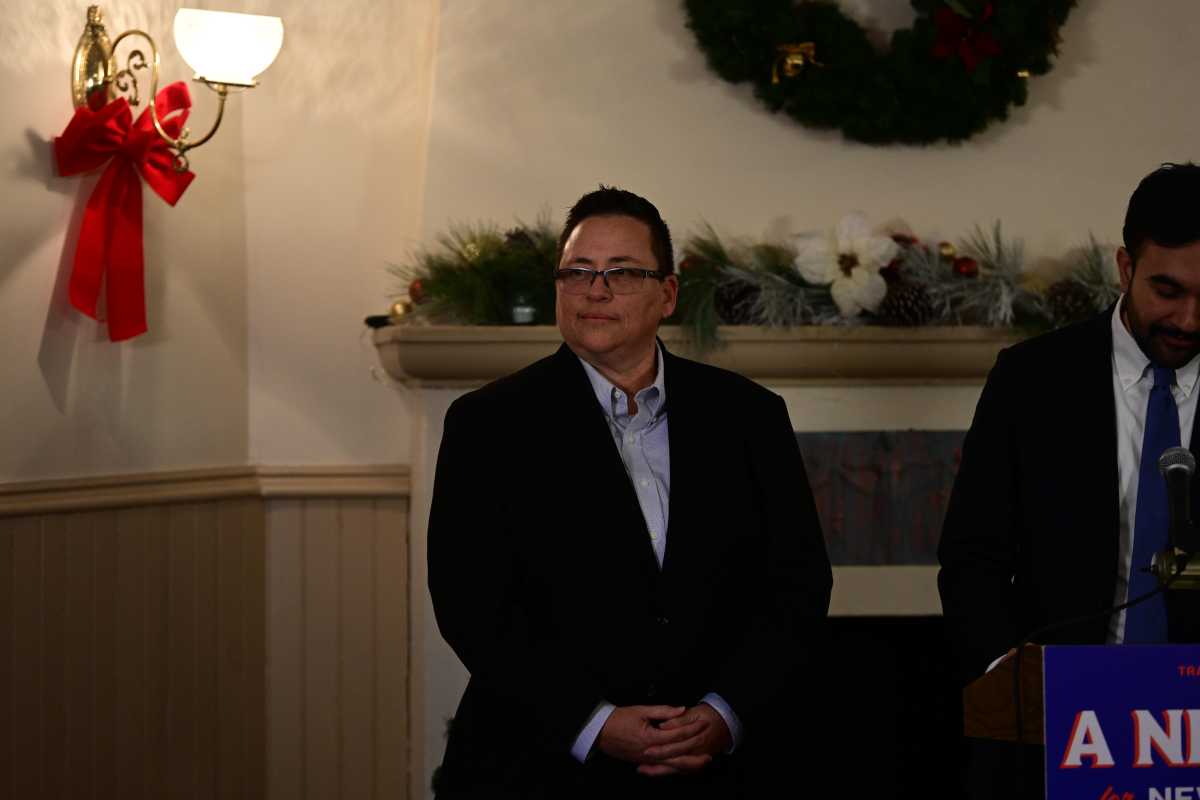Celia Cruz’s life in photos by Alexis Rodriguez-Duarte and partner Tico Torres
When Celia Cruz died on July 16, 2003 at the age of 78, she was accorded two state-like funerals, each one befitting royalty. For Latinos and many who are not Latino, Cruz was the peerless and beloved “Queen of Salsa.”
Tico Torres attended the first public funeral held in the Freedom Tower in downtown Miami. For Cuban Americans, he explained, this was very symbolic. The landmark 1925 Spanish Revival building and former home of the defunct Miami News & Metropolis was their Ellis Island, the site where Cuban refugees were processed from 1962 to 1974.
“La casa de la libertad” was renovated in 2002 and is now a museum dedicated to the lives and struggles of Cuban-Americans and Cubans in pre- and post-Castro Cuba. More than 250,000 people turned out for Cruz’s funeral in Miami.
Next, Cruz was flown to New York, to the Frank E. Campbell Funeral Chapel on East 81st Street. (She lived––and died––in New Jersey, but her fan base and life revolved around the city.)
“The people at the funeral home were like, ‘Oh, don’t worry, Judy Garland was here. We know how to do it.’ Wrong,” laughed Alexis Rodriguez-Duarte, who was in New York at the time. Garland drew about 30,000 mourners. For “La Guarachera de Cuba” more than 100,000 fans paid their respects. The memorial service was held at St. Patrick’s.
For Cuban-Americans Alexis Rodriguez-Duarte and Tico Torres, the death of Celia de la Caridad Cruz Alfonso was more than the end of an era; it was the culmination of a 15-year friendship. As a testament to their friend and idol, photographer Rodriguez-Duarte and his collaborator and partner Torres have created “Presenting Celia Cruz,” an intimate unfettered behind-the-scenes portrait of the legendary performer and larger-than-life personality, and they have invited her friends to be part of it.
The coffee table-sized book, which is totally bilingual in English and Spanish, contains nearly 200 images by Rodriguez-Duarte dating from 1991 to April 2003, most of which have never been published before, as well as anecdotes and testimonies from Celia’s friends from all areas of her remarkable life, including performing artists, fashion designers, politicians and writers.
Three major Cuban-American writers have written evocative reflections on Cruz’s personal impact on them as well as her place in history. They are Guillermo Cabrera Infante, Cervantes Prize-winner for literature in 1997, who has been living in exile in London since the mid-‘60s; Liz Balmaseda, author, screenwriter and two-time Pulitzer Prize-winning journalist from the Miami Herald; and Lydia Martin, features writer and columnist, also from the Miami Herald. Homages also come from Patti LaBelle, Oscar de la Renta, Marc Anthony, Jennifer Lopez, Paquito D’Rivera, Cristina Saralegui, Narcisco Rodriguez, Bruce Weber and Nan Bush, among others.
“We did a call for quotes from different celebrities that we admire and that we have a connection with––we love their music, we know them personally, that we have photographed, or that we knew was a friend of Celia’s,” explained Torres. “We said it could be one word, a sentence, a paragraph, however long you want it to be. Annie Lenox and David Byrne sent back an entire essay. He wrote how he met Celia. It’s an honor to have both of them as part of the book.”
Rodriguez-Duarte and Torres also recall their first meeting with Cruz in 1988. They were living in London where they were barely eking out a living.
“It was the mayonnaise and toast years,” Torres quipped.
“Baked beans and toast and bread and mayonnaise with potato chips inside for the crunchiness,” Rodriguez-Duarte chimed in. “It’s good. We still have it every so often.”
One day, when they came out of the underground, they saw a poster advertising Celia Cruz in concert at the Hammersmith Palais.
“We grew up in Miami, but we had always been a little detached from our Cuban roots because we wanted to be American,” Rodriguez-Duarte recalled. “As teenagers we wanted to listen to rock’n’roll, not Cuban music. That was our parents’ generation. But we thought, wouldn’t it be nice to meet Celia. Let’s try it.”
They tracked down the hotel she was staying at and called her up. A man answered the phone. They explained that they were two Cuban-American boys living in London and wanted to meet Celia.
“Next thing we know, Celia’s on the phone,” Rodriguez-Duarte said. “The person who answered the phone was Pedro Knight, her husband. She says, ‘Come over tomorrow, we’re having a press conference, we can hang out afterwards. I want to know all about you.’ That’s how our relationship started. At that time I didn’t photograph her because I didn’t have money to have a flash, my camera didn’t have one, and I couldn’t rent one, so I didn’t take a camera. Those memories of the first time we met are in our minds.”
Apparently Cruz also remembered—she sent them a postcard from London in 1999, reminding them of that special day. However, the first time they shot Cruz was in 1991 in Miami. (Rodriguez-Duarte and Torres maintain residences in both Greenwich Village and Miami, where their parents live.) She was giving a concert at the Orange Bowl.
“It was very basic available lighting in her Winnebago,” Rodriguez-Duarte recalled. “Then we went backstage. Then little by little we started photographing her. She would call us up, or her manager, Omer Pardillo Cid would call us and say, ‘Hey, do you want to come and hang out?’ I would take my Leica and take snapshots. That’s how we built a relationship through the years. Not as a professional. It was more about friendship. I documented her onstage, offstage, hanging out with friends, she even visited my flat.”
“There was never a time where we said we’re doing these pictures to do a book,” Torres said. “All this happened recently He was just shooting her because we really admired her so much, and we still do.”
She had that chispa, or spark, according to Rodriguez-Duarte.
“One morning, about 10:30 a.m., her manager calls. ‘We’re in the neighborhood. Celia’s shooting a promo for Univision. She needs to go to the bathroom. Can we come over?’” he recalled. “I start running around, cleaning up. Tico was in Miami. I ask her if she wants Cuban coffee. She says, ‘Oh, no, no, make me a Cuban sandwich!’ Bromea mucho, de broma [she joked a lot].
“They shot her from here,” Rodriguez-Duarte continued, sweeping his arm across the cozy, airy living room painted and decorated in startling tropical colors, the couple’s “Little Havana of the North.” “She came out onto the fire escape singing. They went downstairs. I did a whole series on her while she was being filmed. [It’s the book’s spread of Cruz in a purple wig.] We became very popular in the neighborhood. People I didn’t think knew her, knew who she was.”
Rodriguez-Duarte took numerous pictures of Cruz professionally, but he wasn’t her exclusive photographer. However, the book’s cover photo of Cruz, wearing a frilly lime green and white folkloric “guarachera” dress and embracing life to the fullest, has been featured in such publications as Ocean Drive en Español and in People magazine, in its obituary of Cruz.
Cruz is buried in Woodlawn Cemetary. A copy of “Presenting Celia Cruz” is in her mausoleum.
His other commercial and non-commercial images have appeared in major publications in America and Europe. Rodriuguez-Duarte has also had many solo exhibitions and participated in countless group shows in Miami, London, Los Angeles, New York, Chicago and Washington, D.C. His photos of prominent Cuban Americans from many fields of endeavor that he has taken over the years will form the basis of a book called, “Cuba Out of Cuba.” Other projects on the horizon are a book of male nudes, “Manscapes,” and another recording the couple’s nostalgic return to Cuba for the first time since leaving on the Freedom Flights with their respective parents as young children, called “Havana May 1997.” For the latter, the couple managed to smuggle out 120 rolls of film they took clandestinely.
Both men are slight of build. Rodriguez-Duarte, 42, is a dark-eyed, Latino, while Torres, 43, is fairer and slimmer. They have known each other for 23 years and have just celebrated their 20th anniversary as partners and seamless workmates. They are so in tune with each other that even their parents have difficulty distinguishing their voices over the phone. “Presenting Celia Cruz” is their first book collaboration. They have worked together and separately on photo shoots. Torres is a stylist.
“We’re good friends,” he said. “It’s fun. We’ve always had goals. We’ve always known that there would be a book someday. It’s a very interesting teamwork.”
Rodriguez-Duarte readily agreed.
“We get to create together and do things together,” he said. “We understand each other. We live and work together. We spend 24 hours a day together sometimes…”
“… in our small West Village apartment,” Torres said, laughing.
And they even finish each other’s thoughts.
Alexis Rodriguez-Duarte and Tico Torres will sign books and reminisce about Celia Cruz at Lectorum, 137 West 14th Street on Friday, November 19, beginning at 6 p.m. The talk will be in Spanish and English.


































